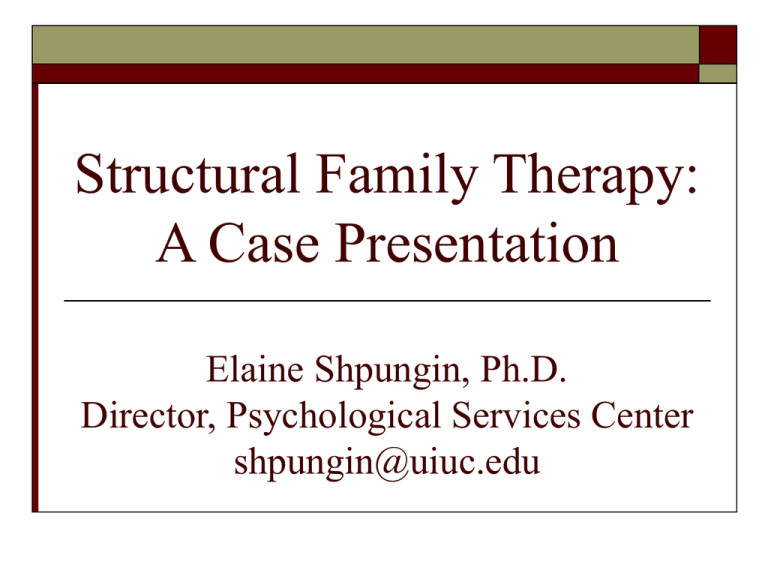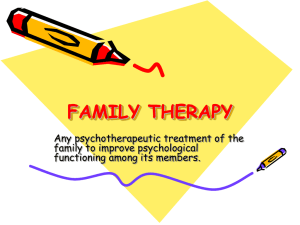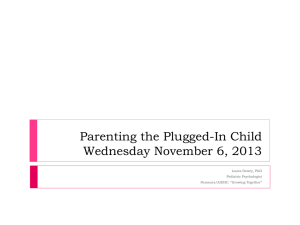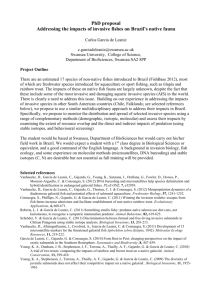Family therapy case
advertisement

Structural Family Therapy: A Case Presentation Elaine Shpungin, Ph.D. Director, Psychological Services Center shpungin@uiuc.edu The Family Systems Perspective Individuals understood in context of family Family seen as living organism; individuals play roles in overall functioning of organism Individual symptoms seen as manifestation of difficulty/dysfunction within family Individual symptoms may serve “useful” function within family Example? Structural Family Therapy Salvador Minuchin Step 1: Structural Assessment Boundaries – how close are family members? how flexible are the rules? Subsystems – what are the dynamics between family “clusters”? who aligns with whom? who gets left out? Roles – what repetitive patterns do family members play out with each other? who has what “job” in family? are roles appropriate among members and/or clusters? Step 2: Intervention Goal: Re-align family boundaries and roles to be more adaptive for all family members Step 2: Intervention Goal: To re-align family boundaries and roles to be more adaptable for whole family Sample Techniques: Enacting patterns within session (exercises; seating arrangements; organically) Creating new communication channels (“Tell her, not me.”) (“Interpreting” for family members) Creating disequilibrium; escalating stress Assigning new roles Establishing new boundaries Providing support, education, guidance, hope Garcia Family: A Case Example Mr. Garcia Spousal discord (1st gen Latino) Spousal discord Emotional adjust. Mrs. Garcia (European -American) Sylvia (12) Jeremy (16) (American-born) (Latina) Adopted at birth Disrespect “Bad attitude” (towards mom) Disobedience Physical aggression Alex (6) Sergei (5) (Russian) Adopted 1 yr ago (Russian) Adopted 1 yr ago Emotional adjustment Language difficulty Behavior probs Emotional adjustment Katya (15) Olga (7) (Russian) Adopted 1 mo ago (Russian) Adopted 1 mo ago Thank You Elaine Shpungin Shpungin@uiuc.edu Structural Family Therapy (Salvador Minuchin) Family Structure = invisible set of rules governing family transactions (family members’ behaviors towards each other) Family Subsystems (e.g., parents) have appropriate functions and tasks Family transactions and subsystems are governed by boundaries (e.g., closeness of members, flexibility of rules) Therapist’s role: Re-align structure of family – i.e., change interaction patterns between family members and family subsytems to be more functional











